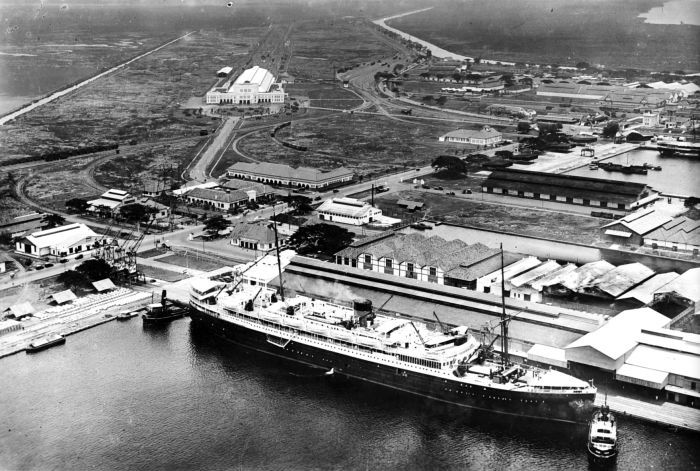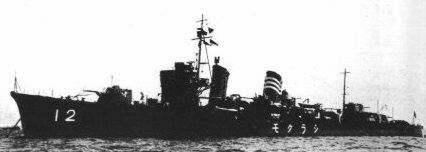|
HNLMS Van Nes (1930)
HNLMS ''Van Nes'' ( nl, Hr.Ms. Van Nes) was a of the Royal Netherlands Navy, named after the 17th century Dutch admiral Jan Jansse van Nes. She served during World War II. Service history The ship was laid down on 15 August 1928, at the ''Burgerhout's Scheepswerf en Machinefabriek'', in Rotterdam, and launched on 20 March 1930. The ship was commissioned on 12 March 1931. ''Van Nes'' escorted the submarine back to Surabaya, to be repaired there after the vessel was damaged as a result of a battery explosion in Singapore harbor, on 21 December 1941. Three men were killed in the explosion. They arrived at Surabaya, on 6 January 1942 . Sinking On 16 February, ''Van Nes'' was sent to Belitung, where she had to rendez-vous with the KPM ship . Together they continued to Tanjung Pandan, to evacuate the Dutch population to Java. The ships arrived on 17 February, at 8:00, ''Sloet van der Beele'' took 400 soldiers and civilians on board in the port while ''Van Nes'' didn't enter the ... [...More Info...] [...Related Items...] OR: [Wikipedia] [Google] [Baidu] |
Jan Jansse Van Nes
Jan Janszoon van Nes (26 April 1631 – ) was a Dutch admiral and brother of naval commander Aert Janszoon van Nes. They both took part in the Raid on the Medway of 1667. He was buried in the Grote of Sint-Laurenskerk (Rotterdam) Church. Bibliography * * {{DEFAULTSORT:Nes, Jan Jansse van 1631 births 1680 deaths Admirals of the navy of the Dutch Republic Dutch naval personnel of the Anglo-Dutch Wars Military personnel from Rotterdam ... [...More Info...] [...Related Items...] OR: [Wikipedia] [Google] [Baidu] |
Destroyer
In naval terminology, a destroyer is a fast, manoeuvrable, long-endurance warship intended to escort larger vessels in a fleet, convoy or battle group and defend them against powerful short range attackers. They were originally developed in 1885 by Fernando Villaamil for the Spanish NavySmith, Charles Edgar: ''A short history of naval and marine engineering.'' Babcock & Wilcox, ltd. at the University Press, 1937, page 263 as a defense against torpedo boats, and by the time of the Russo-Japanese War in 1904, these "torpedo boat destroyers" (TBDs) were "large, swift, and powerfully armed torpedo boats designed to destroy other torpedo boats". Although the term "destroyer" had been used interchangeably with "TBD" and "torpedo boat destroyer" by navies since 1892, the term "torpedo boat destroyer" had been generally shortened to simply "destroyer" by nearly all navies by the First World War. Before World War II, destroyers were light vessels with little endurance for unattended o ... [...More Info...] [...Related Items...] OR: [Wikipedia] [Google] [Baidu] |
Ships Built In Rotterdam
A ship is a large watercraft that travels the world's oceans and other sufficiently deep waterways, carrying cargo or passengers, or in support of specialized missions, such as defense, research, and fishing. Ships are generally distinguished from boats, based on size, shape, load capacity, and purpose. Ships have supported exploration, trade, warfare, migration, colonization, and science. After the 15th century, new crops that had come from and to the Americas via the European seafarers significantly contributed to world population growth. Ship transport is responsible for the largest portion of world commerce. The word ''ship'' has meant, depending on the era and the context, either just a large vessel or specifically a ship-rigged sailing ship with three or more masts, each of which is square-rigged. As of 2016, there were more than 49,000 merchant ships, totaling almost 1.8 billion dead weight tons. Of these 28% were oil tankers, 43% were bulk carriers, a ... [...More Info...] [...Related Items...] OR: [Wikipedia] [Google] [Baidu] |
Marine Luchtvaart Dienst
The Netherlands Naval Aviation Service ( nl, Marineluchtvaartdienst, shortened to MLD) is the naval aviation branch of the Royal Netherlands Navy. History World War I Although the MLD was formed in 1914, with the building of a seaplane base at De Mok, Texel, it developed slowly in the inter-war years due to limited budget. After the graduation of the first pilot group in 1915, on August 18, 1917, the MLD was founded under official decree and De Mok became the main base. At this time, the emphasis was on seaplane operations in the Dutch East Indies where Dornier Wal aircraft enabled patrols of the large archipelago in 1926. The perceived threat from Nazi Germany in the 1930s accelerated the development of air capability and the purchase of new equipment. World War II The German invasion of the Netherlands on May 10, 1940, rapidly overwhelmed Dutch resistance and the MLD aircraft were redeployed to France before the Dutch formally surrendered on 15 May. Shortly after, th ... [...More Info...] [...Related Items...] OR: [Wikipedia] [Google] [Baidu] |
Tanjung Priok
Tanjung Priok is a district of North Jakarta, Indonesia. It hosts the western part of the city's main harbor, the Port of Tanjung Priok (located in Tanjung Priok District and Koja District). The district of Tanjung Priok is bounded by Laksamana Yos Sudarso Tollway and Sunter River canal to the east, by Kali Japat, Kali Ancol, and the former Kemayoran Airport to the southwest, by Sunter Jaya Road and Sunter Kemayoran Road to the south, and by Jakarta Bay to the north. History Before human development, the coastal area of what is now Tanjung Priok was an area of brackish water with swamp and mangrove forest. The old harbor of Jakarta During the colonial era, Batavia at first relied on the Sunda Kelapa harbor area. This meant that Batavia had a harbor system like many others cities. I.e. an anchorage at sea at some distance from the city, and a city harbor where smaller ships could attach to a quay. It meant that big ships like the Dutch East Indiamen and later ships safely anc ... [...More Info...] [...Related Items...] OR: [Wikipedia] [Google] [Baidu] |
Japanese Destroyer Isonami (1927)
was the ninth of twenty-four s, built for the Imperial Japanese Navy following World War I. When introduced into services, these ships were the most powerful destroyers in the world. They served as first-line destroyers through the 1930s, and remained formidable weapons systems well into the Pacific War. History Construction of the advanced ''Fubuki''-class destroyers was authorized as part of the Imperial Japanese Navy's expansion program from fiscal 1923, intended to give Japan a qualitative edge with the world's most modern ships. The ''Fubuki'' class had performance that was a quantum leap over previous destroyer designs, so much so that they were designated . The large size, powerful engines, high speed, large radius of action and unprecedented armament gave these destroyers the firepower similar to many light cruisers in other navies. ''Isonami'', built at the Uraga Dock Company was laid down on 19 October 1926, launched on 24 November 1927 and commissioned on 30 Jun ... [...More Info...] [...Related Items...] OR: [Wikipedia] [Google] [Baidu] |
Japanese Destroyer Shirakumo (1927)
was a and the eighth in a class of twenty-four vessels built for the Imperial Japanese Navy following World War I. When introduced into service, these ships were the most powerful destroyers in the world. They served as first-line destroyers through the 1930s, and remained formidable weapons systems well into the Pacific War. History Construction of the advanced ''Fubuki''-class destroyers was authorized as part of the Imperial Japanese Navy's expansion program from fiscal 1923, intended to give Japan a qualitative edge with the world's most modern ships. The ''Fubuki'' class had performance that was a quantum leap over previous destroyer designs, so much so that they were designated . The large size, powerful engines, high speed, large radius of action and unprecedented armament gave these destroyers the firepower similar to many light cruisers in other navies. ''Shirakumo'', built at the Fujinagata Shipyards in Osaka was laid down on 27 October 1926, launched on 27 D ... [...More Info...] [...Related Items...] OR: [Wikipedia] [Google] [Baidu] |
Japanese Cruiser Chōkai
was a heavy cruiser, armed with ten guns, four guns, eight tubes for the Type 93 torpedo, and assorted anti-aircraft guns. ''Chōkai'' was designed with the Imperial Japanese Navy strategy of the great "Decisive Battle" in mind, and built in 1932 by Mitsubishi's shipyard in Nagasaki. She was sunk in the Battle off Samar in October 1944. ''Chōkai'' was named for Mount Chōkai. Operational history At the start of the Pacific War, ''Chōkai'' supported the invasion of Malaya and participated in the pursuit of the Royal Navy's battleship Force Z. During January and February 1942, ''Chōkai'' was involved in operations to seize the oil-rich Dutch East Indies and the island of Borneo. Steaming near Cape St. Jacques, ''Chōkai'' struck a reef, sustaining hull damage on 22 February 1942. On 27 February, she reached Singapore for repairs. After repairs, ''Chōkai'' was once again assigned to a support role in an invasion, this time the landings at Iri, Sumatra, and the ... [...More Info...] [...Related Items...] OR: [Wikipedia] [Google] [Baidu] |
Japanese Aircraft Carrier Ryūjō
''Ryūjō'' ( "Prancing Dragon") was a light aircraft carrier built for the Imperial Japanese Navy (IJN) during the early 1930s. Small and lightly built in an attempt to exploit a loophole in the Washington Naval Treaty of 1922, she proved to be top-heavy and only marginally stable and was back in the shipyard for modifications to address those issues within a year of completion. With her stability improved, ''Ryūjō'' returned to service and was employed in operations during the Second Sino-Japanese War. During World War II, she provided air support for operations in the Philippines, Malaya, and the Dutch East Indies, where her aircraft participated in the Second Battle of the Java Sea. During the Indian Ocean raid in April 1942, the carrier attacked British merchant shipping with her guns and aircraft. ''Ryūjō'' next participated in the Battle of the Aleutian Islands in June. She was sunk by American carrier aircraft at the Battle of the Eastern Solomons on 24 August 194 ... [...More Info...] [...Related Items...] OR: [Wikipedia] [Google] [Baidu] |
Concentration Camps
Internment is the imprisonment of people, commonly in large groups, without charges or intent to file charges. The term is especially used for the confinement "of enemy citizens in wartime or of terrorism suspects". Thus, while it can simply mean imprisonment, it tends to refer to preventive confinement rather than confinement ''after'' having been convicted of some crime. Use of these terms is subject to debate and political sensitivities. The word ''internment'' is also occasionally used to describe a neutral country's practice of detaining belligerent armed forces and equipment on its territory during times of war, under the Hague Convention of 1907. Interned persons may be held in prisons or in facilities known as internment camps (also known as concentration camps). The term ''concentration camp'' originates from the Spanish–Cuban Ten Years' War when Spanish forces detained Cuban civilians in camps in order to more easily combat guerrilla forces. Over the following ... [...More Info...] [...Related Items...] OR: [Wikipedia] [Google] [Baidu] |
United Kingdom
The United Kingdom of Great Britain and Northern Ireland, commonly known as the United Kingdom (UK) or Britain, is a country in Europe, off the north-western coast of the continental mainland. It comprises England, Scotland, Wales and Northern Ireland. The United Kingdom includes the island of Great Britain, the north-eastern part of the island of Ireland, and many smaller islands within the British Isles. Northern Ireland shares a land border with the Republic of Ireland; otherwise, the United Kingdom is surrounded by the Atlantic Ocean, the North Sea, the English Channel, the Celtic Sea and the Irish Sea. The total area of the United Kingdom is , with an estimated 2020 population of more than 67 million people. The United Kingdom has evolved from a series of annexations, unions and separations of constituent countries over several hundred years. The Treaty of Union between the Kingdom of England (which included Wales, annexed in 1542) and the Kingdom of Scotland in 170 ... [...More Info...] [...Related Items...] OR: [Wikipedia] [Google] [Baidu] |





